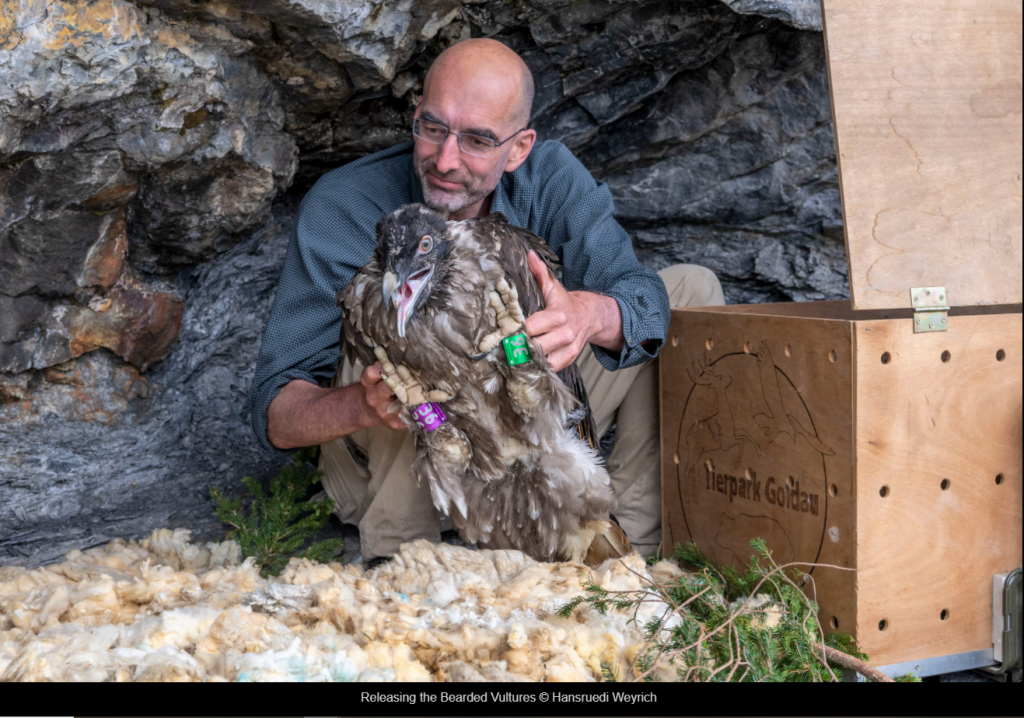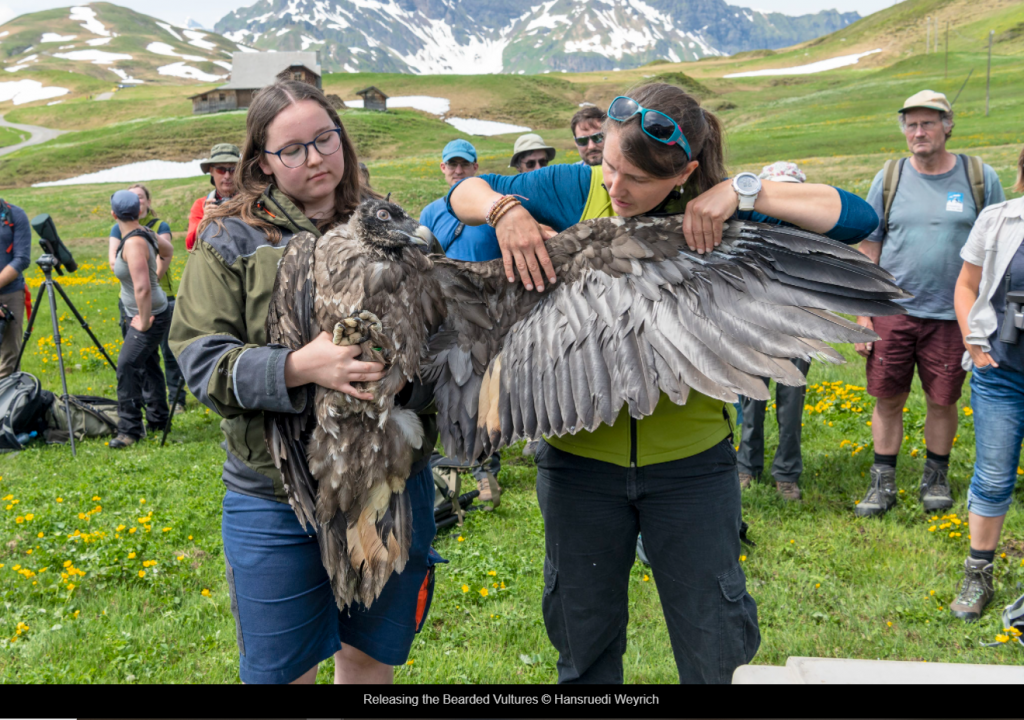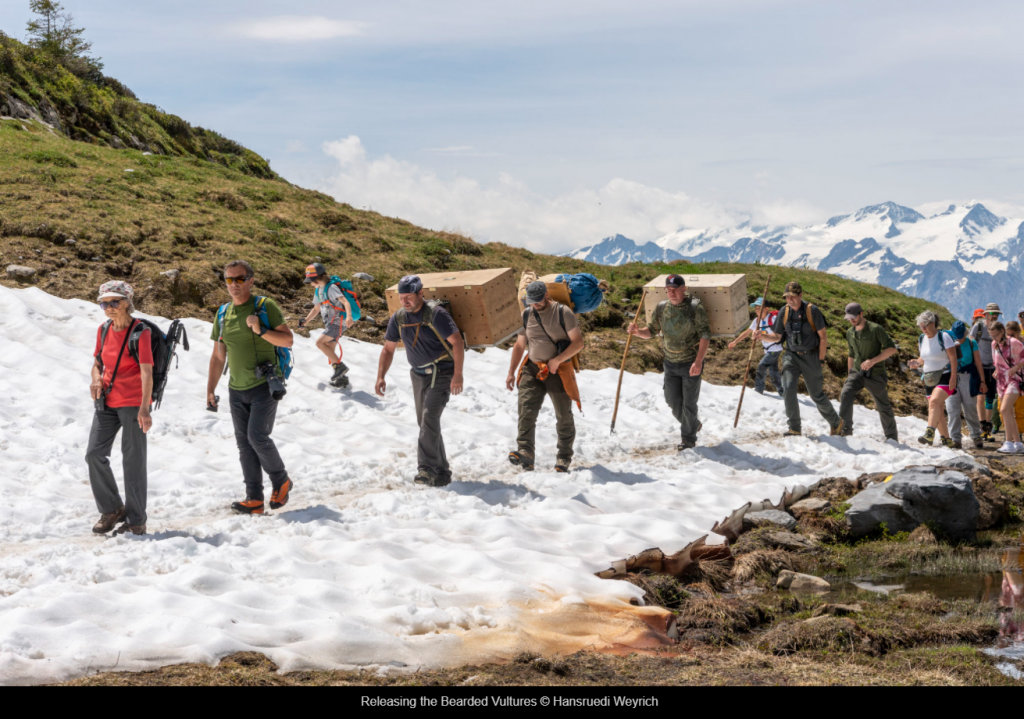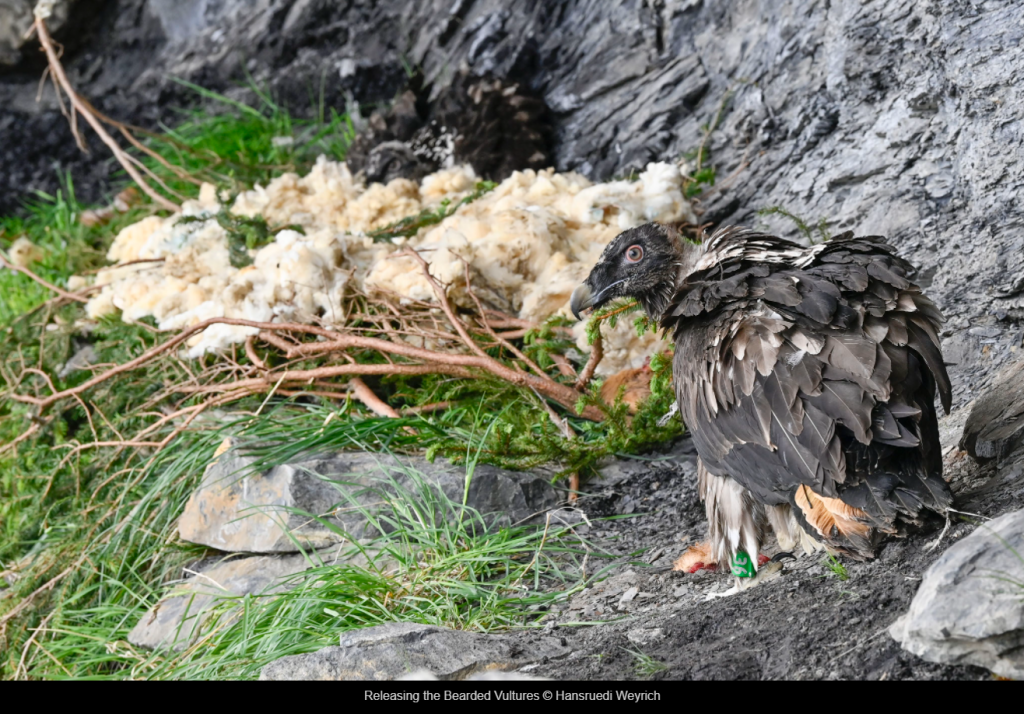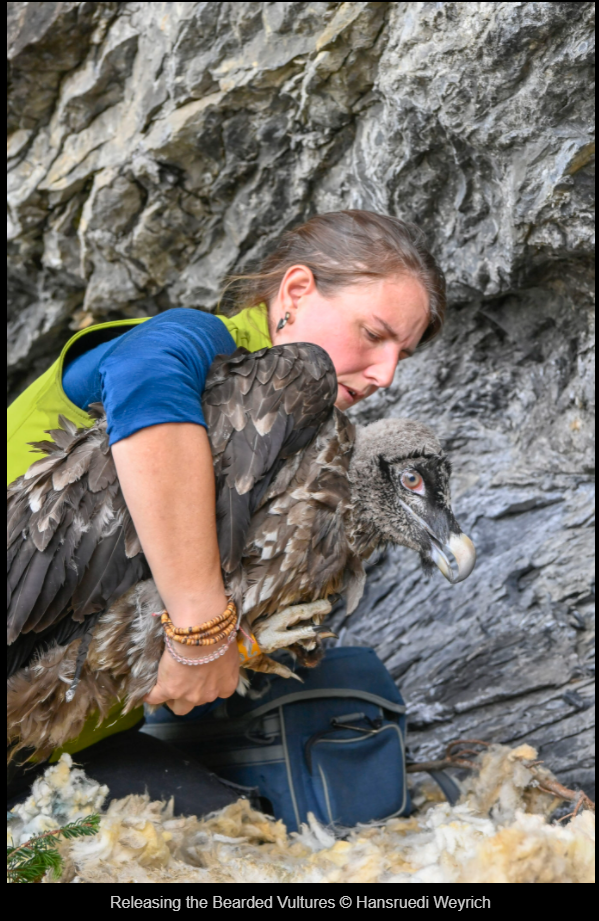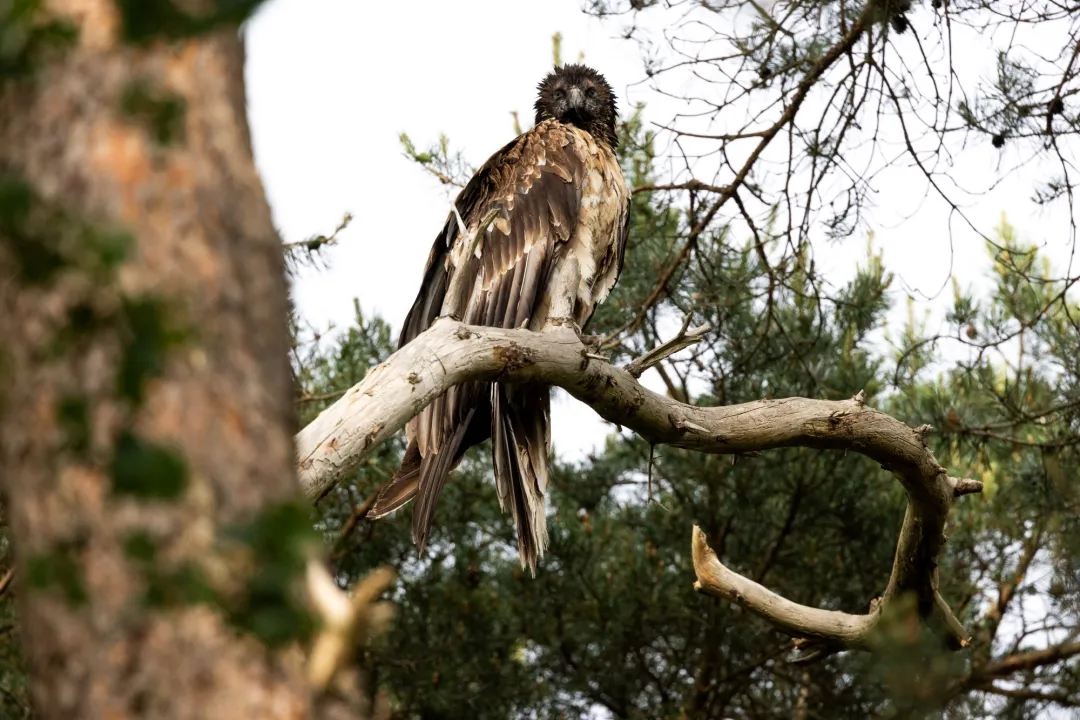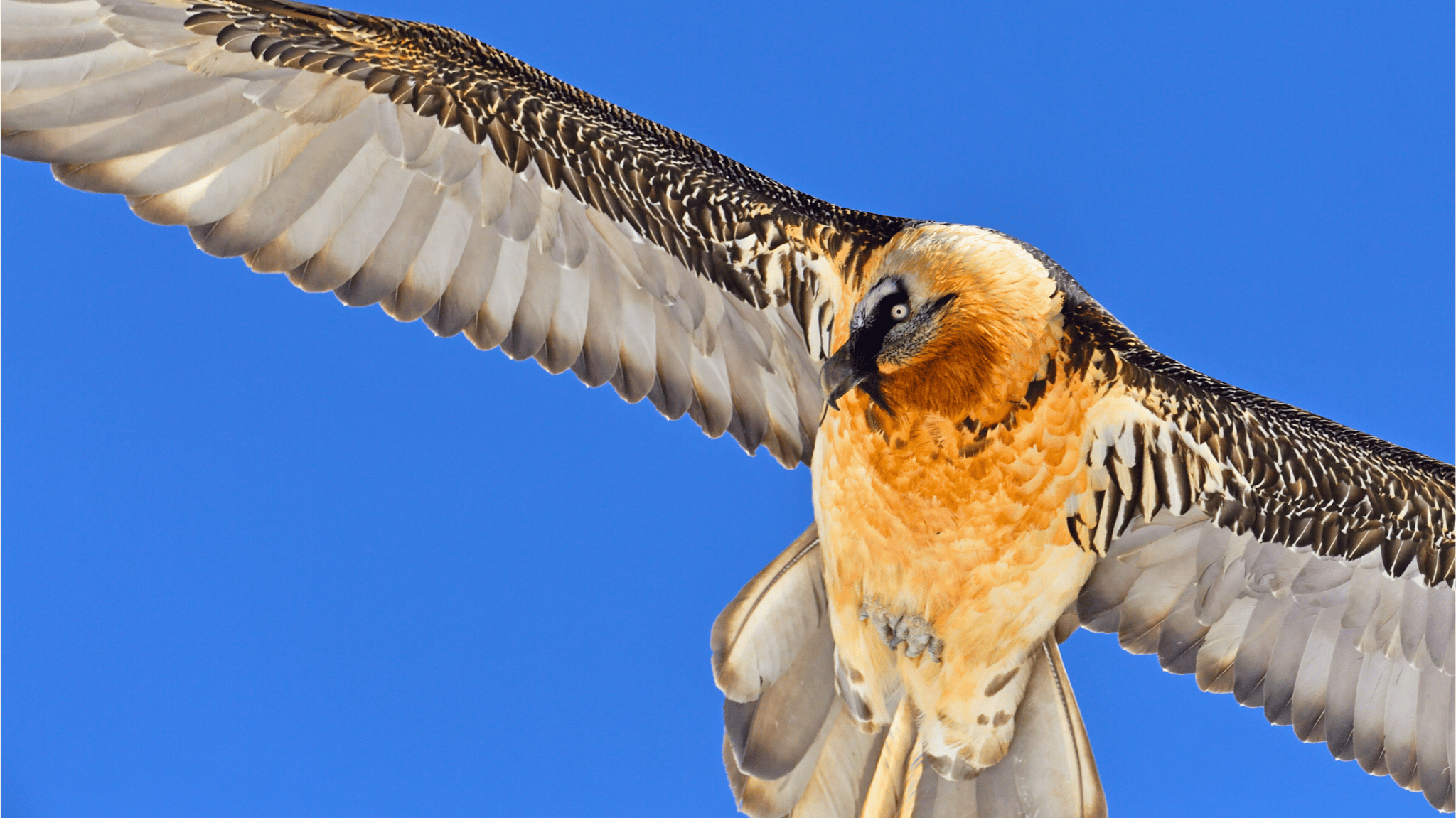
This year marked the 30 year anniversary since the first Bearded Vultures were released into the wild in the Swiss Alps, marking the beginning of the successful return of the species in the country as part of the Alpine reintroduction project. Over the weekend, on Sunday 27 June, the region welcomed Donna Elvira and BelArosa, the 50th and 51st Bearded Vultures released in Switzerland! The two young vultures that hatched in captivity moved in the Swiss Wildlife Reserve Huetstock near Melchsee-Frutt where they will spend the next few weeks to gradually adapt to their new life in the wild and help boost the local population.
Releasing Donna Elvira and BelArosa
Donna Elvira is a female bird that hatched in the Bearded Vulture captive breeding centre of Guadalentín, which breeds most birds every years and specializes in double adoptions, and is managed by us at the Vulture Conservation Foundation (VCF) following an agreement with the Junta de Andalucía. The second Bearded Vulture named BelArosa is male and hatched in ASTERS in France. Both centres are important partners of the Bearded Vulture Captive Breeding Network, coordinated by the VCF on behalf of EAZA’s EEP, which breeds the species for conservation purposes. This Network assigned the two vulture to this project according to their genetic background to help increase the still low genetic diversity of the Bearded Vulture population in the Alps.
Ahead of the release, the team equipped the birds with GPS tags and bleached their feathers for monitoring and identification purposes. Our partners from Stiftung Pro Bartgeier presented the birds to over 300 people who took part in this year’s reintroduction event to witness the release of the young animals, a unique experience that attracts many Bearded Vulture fans from all over Switzerland every year. The group then hiked to the hacking site near Melchsee-Frutt in the Swiss Alps to move the two young vultures to their new home. The VCF and its partners release Bearded Vultures using the ‘hacking method’, which is similar to the natural way of fledging. This method involves releasing chicks that hatched in captivity at an artificial nest in a suitable habitat to acclimatize to the natural environment before they take their first flights. With this technique, the nestlings can associate the place where they are released with the area of hatching so that when they reach breeding age, which is around 8-10 years old, they select these places to breed. When Bearded Vultures are young, they tend to travel vast distances and explore new regions, but once they become sexually mature, they tend to select areas close to where they hatched to breed.
After the successful release, the work is not over yet. A team from Stiftung Pro Bartgeier stays in the mountains to monitor and feed the released birds without human contact until they fledge.
Vulture fans can watch how Donna Elvira and BelArosa are adapting to their new home via the live webcam and visit the information stand to observe the birds in their new home.
Bearded Vultures in Switzerland
The Bearded Vulture population in Switzerland is growing. Since 2015, the releases in Switzerland take place in Central Switzerland and are mainly targeted to increase the genetic diversity of the Alpine population.
In the Alps the wild population of Bearded Vultures are breeding well since the Alps reintroduction project began in 1986, with a sustainable demographic growth. Indeed the reintroductions could stop, if mortality does not increase by more than 1 bird per year, however, the genetic composition of the Alpine reintroduced population is still too small to avoid inbreeding in the long term.
All the birds reintroduced originate from a small number of captive founder birds, so reintroduction in the Alps is still ongoing to mainly boost the genetic diversity – individuals released there hold rare genetic backgrounds. As there is a higher chance to become part of the breeding population in the central Alps, these rarer genetic types are released into the Swiss Alps. While the wild population is growing in the mountains of Grisons and Valais, Bearded Vultures are less common in Central Switzerland, which is another reason release sites in the region have been selected.
So far, we released thirteen Bearded Vultures near Melchsee-Frutt; three in 2015, two each in 2016, 2017, 2018, 2020 and 2021.
Stay tuned with the releases by following #BeardedVultureReleaseSeason on Facebook, Twitter, LinkedIn and Instagram!

